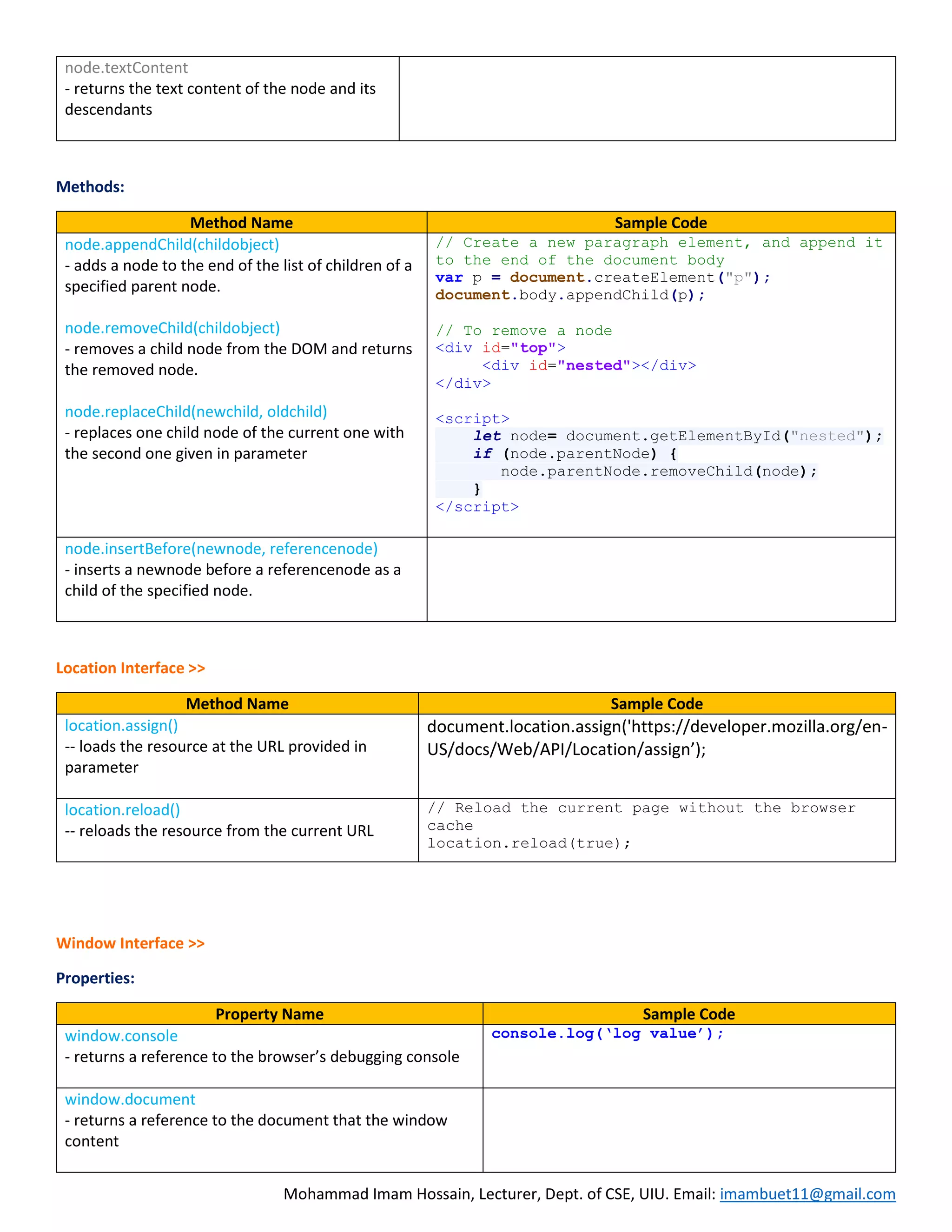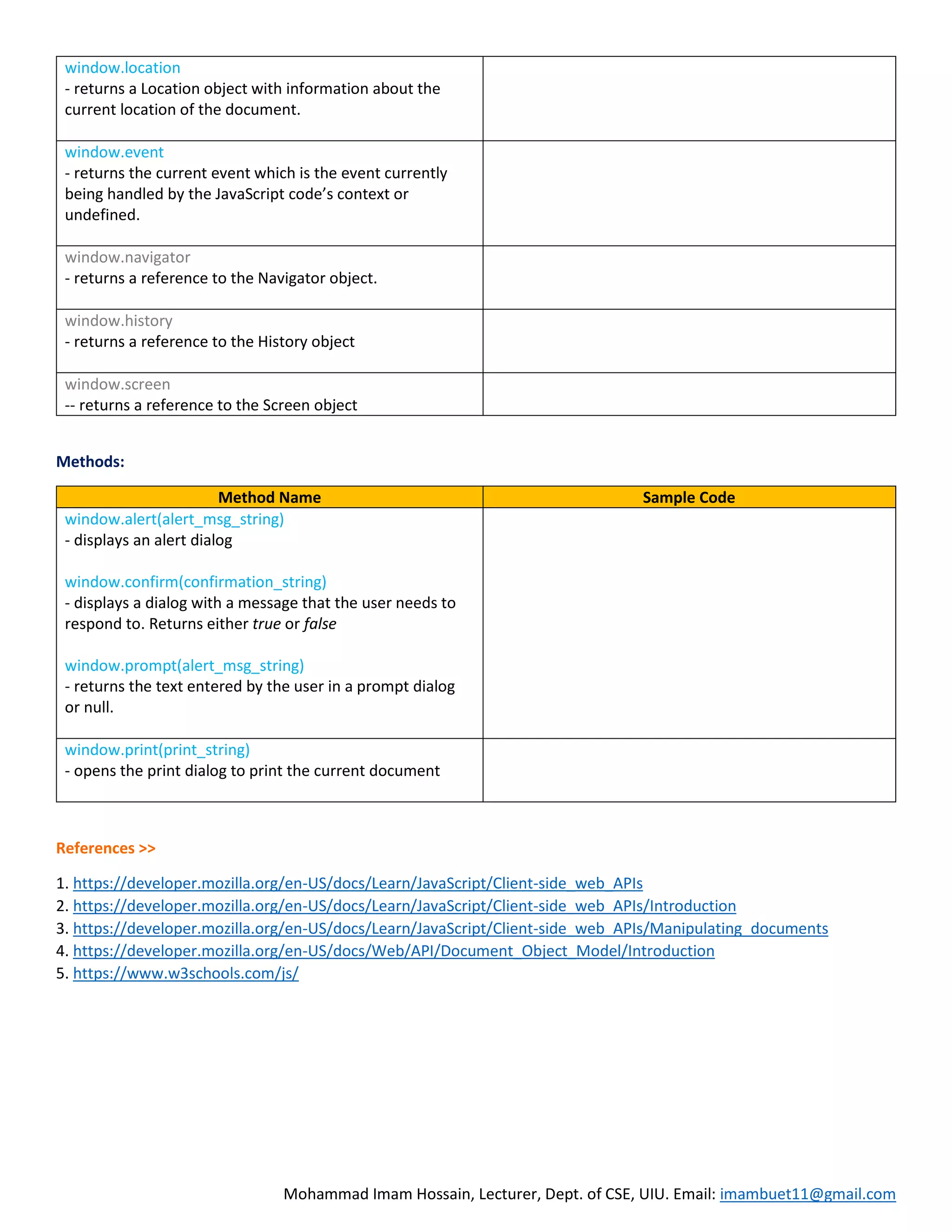The document discusses the Document Object Model (DOM) as a programming interface for HTML and XML documents, allowing manipulation of the document's structure, style, and content using JavaScript. It outlines various DOM properties and methods, providing sample code for creating, modifying, and accessing elements within a web page. Additionally, it includes information on the location and window interfaces and links to further resources for learning about client-side web APIs.
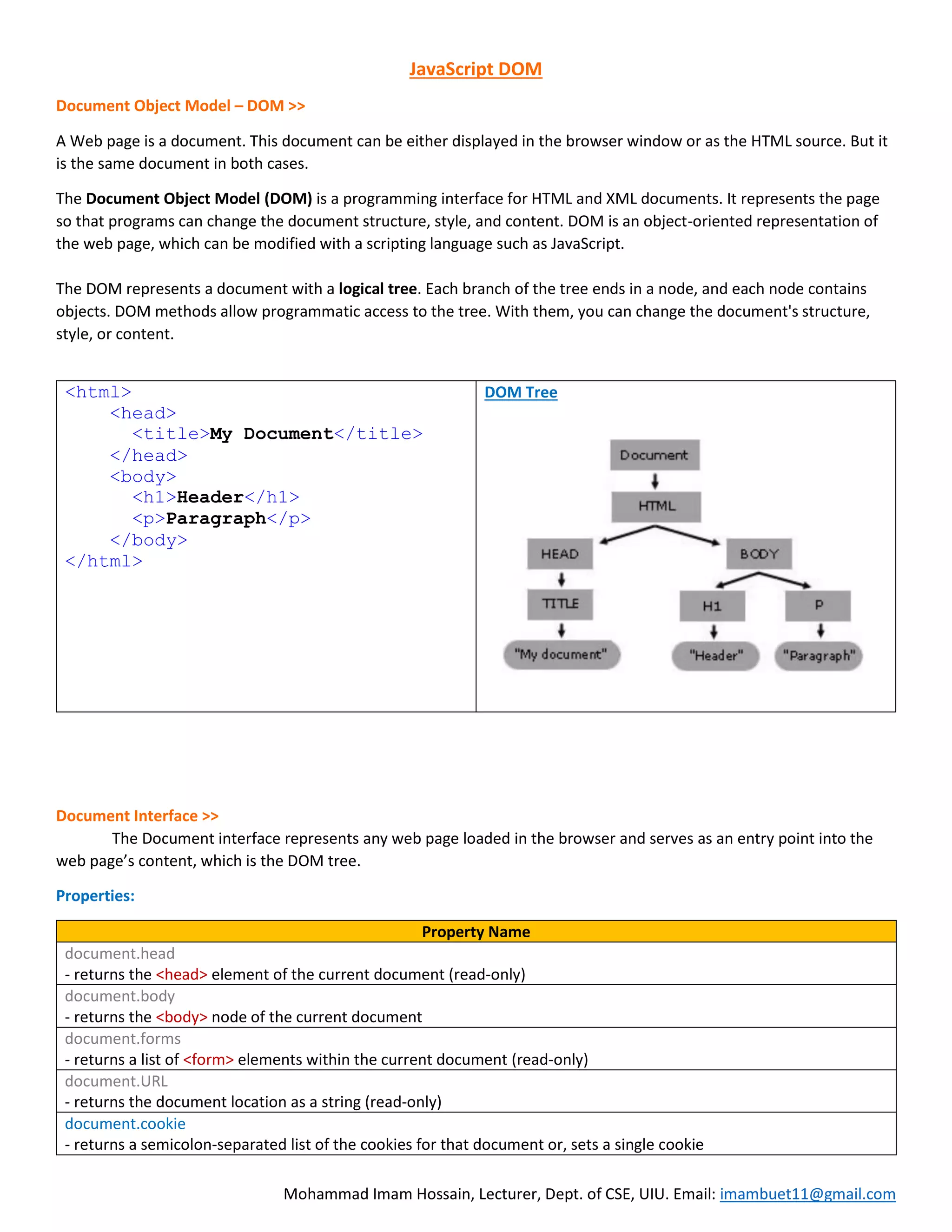
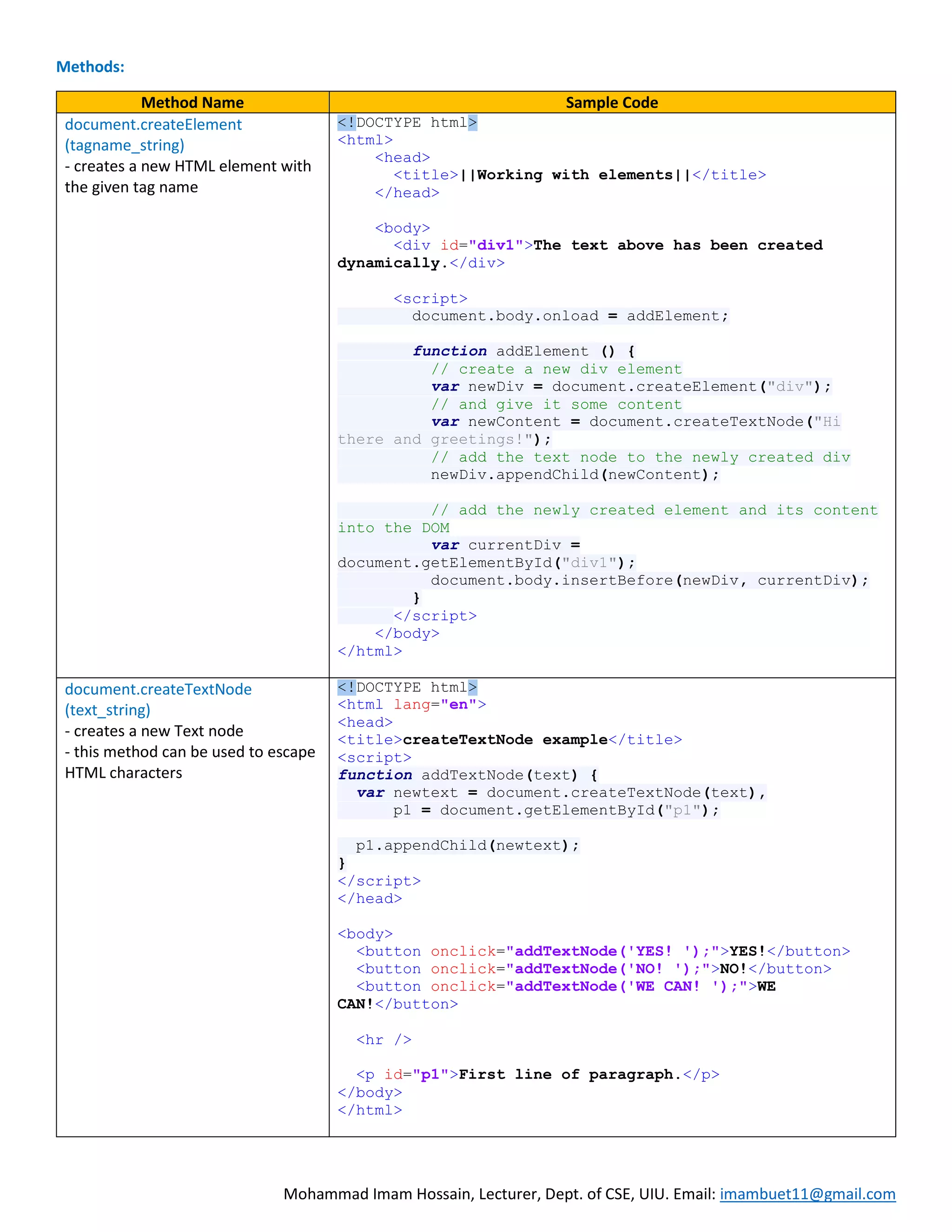
![Mohammad Imam Hossain, Lecturer, Dept. of CSE, UIU. Email: imambuet11@gmail.com document.getElementsByClassName (classname_string) - returns a list of all elements with the given class name document.getElementsByTagName (tagname_string) - returns a list of elements with the given tag name document.getElementsByName (name_value) - returns a list of elements where the name attribute contains the value name_value document.getElementById (id_string) - returns an Element object representing the element whose id property matches the specified id_string. <html> <head> <title>getElementById example</title> </head> <body> <p id="para">Some text here</p> <button onclick="changeColor('blue');">blue</button> <button onclick="changeColor('red');">red</button> <script> function changeColor(newColor) { var elem = document.getElementById('para'); elem.style.color = newColor; } </script> </body> </html> document.querySelectorAll (selector_string) - returns a list of the document’s elements that match the specified group of selectors. <!DOCTYPE html> <html> <body> <p>Hello World!</p> <p class="intro">The DOM is very useful.</p> <p class="intro">This example demonstrates the <b>querySelectorAll</b> method.</p> <p id="demo"></p> <script> var x = document.querySelectorAll("p.intro"); document.getElementById("demo").innerHTML = 'The first paragraph (index 0) with class="intro": ' + x[0].innerHTML; </script> </body> </html>](https://image.slidesharecdn.com/jsdomupdated-200812074740/75/Web-6-JavaScript-DOM-3-2048.jpg)
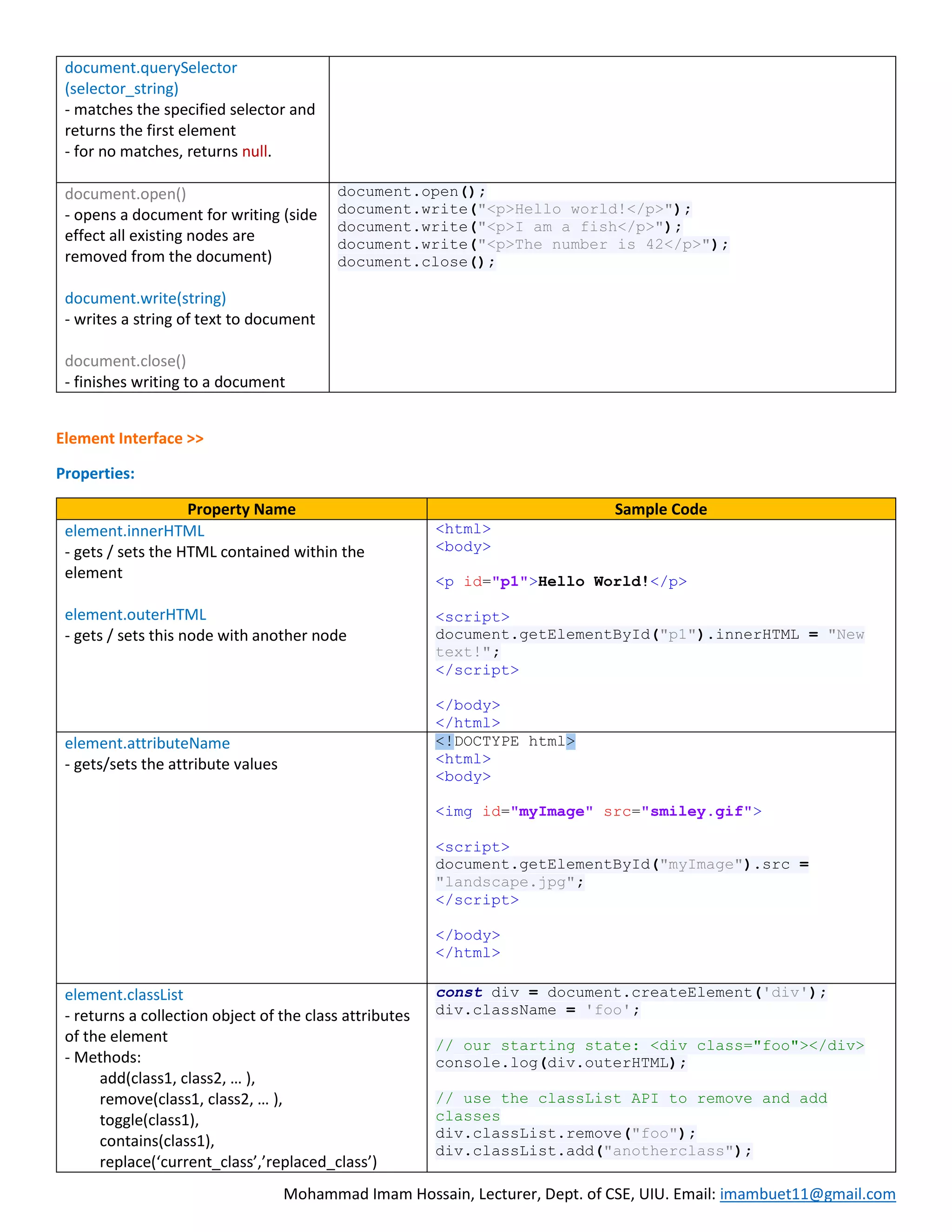
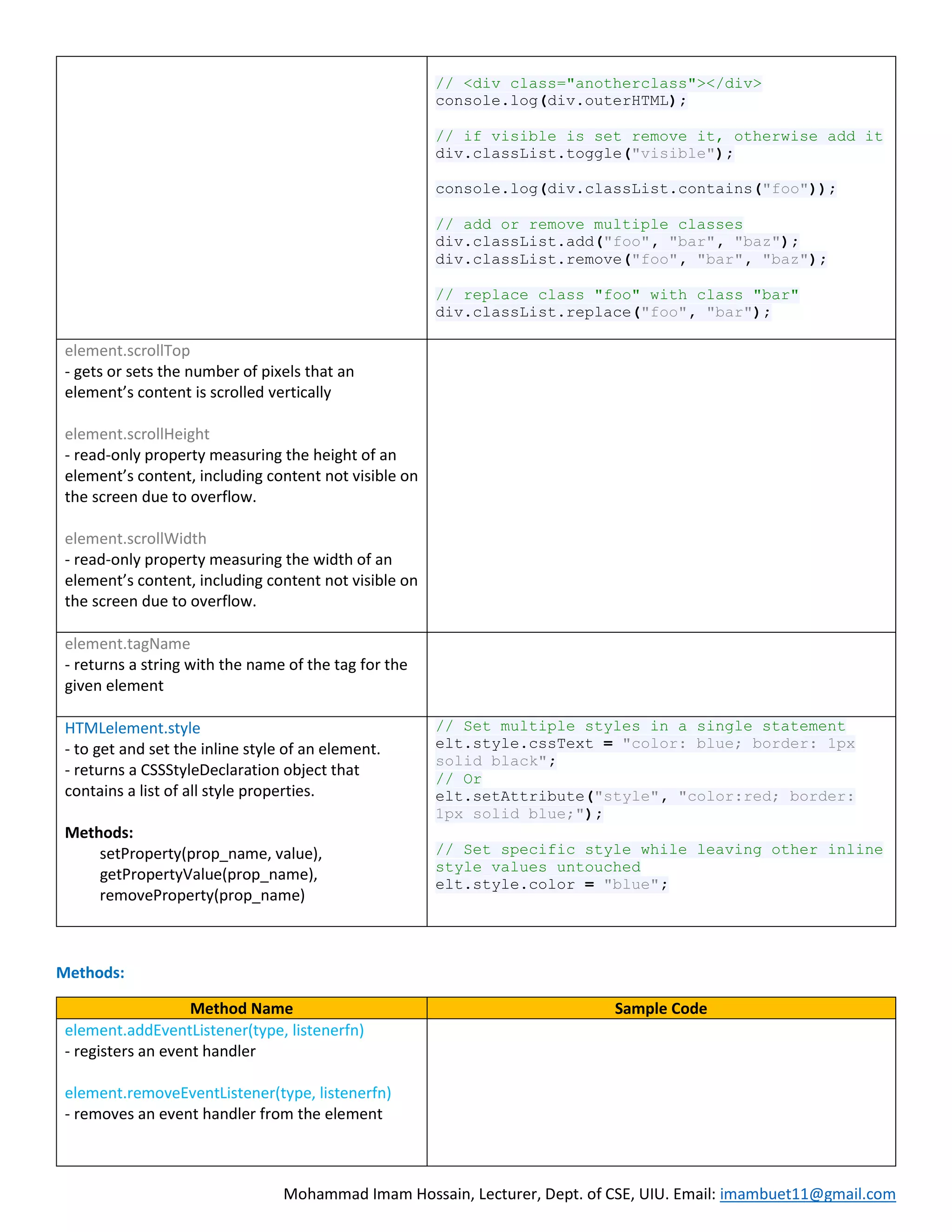
![Mohammad Imam Hossain, Lecturer, Dept. of CSE, UIU. Email: imambuet11@gmail.com element.setAttribute(attr_name, value) - sets value of an attribute on the specified element. If the attribute doesn’t exists then a new attribute is added with the specified name and value. - to set Boolean attribute value to true, set the value to empty string “” and to set the Boolean attribute value to false, just remove this Boolean attribute. element.removeAttribute(attr_name) - removes the attribute with the specified value from the element. element.hasAttribute(attr_name) - returns true/false indicating whether the specified element has the specified attribute or not. element.getAttribute(attr_name) - returns the value of a specified attribute on the element. element.toggleAttribute(attr_name) - toggles a Boolean attribute, removing it if it is present and adding it if it is not present on the specified element. <button>Hello World</button> <script> var b = document.querySelector("button"); b.setAttribute("name", "helloButton"); b.setAttribute("disabled", ""); </script> Node Interface >> Properties: Property Name Sample Code node.parentNode - returns the parent of the specified node in the DOM tree if (node.parentNode) { // remove a node from the tree, unless // it's not in the tree already node.parentNode.removeChild(node); } node.childNodes - returns a NodeList of all the child nodes of the given element, first child index is 0 var children = parg.childNodes; for (var i = 0; i < children.length; i++) { // do something with each child as children[i] // NOTE: List is live, adding or removing children will change the list } node.nextSibling - returns a Node representing the next node in the tree or null. node.previousSibling - returns a Node representing the previous node in the tree or null.](https://image.slidesharecdn.com/jsdomupdated-200812074740/75/Web-6-JavaScript-DOM-6-2048.jpg)
